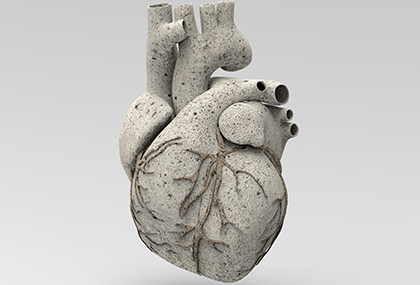Lately, the complexity of percutaneous coronary artery interventions (PCI) has seen an increase, mainly driven by the increasing prevalence of coronary lesion calcification, which represents a significant challenge for interventionists. Untreated calcification might result in insufficient stent expansion, a high risk factor of thrombosis and instent restenosis.

Historically, several devices have been used to treat calcification, such as non-compliant high pressure balloons, cutting or scoring balloons and atherectomy. However, these methods can have limitations to effectively modify calcium. Since 2021, intravascular lithotripsy (IVL) has emerged as a promising solution, with safety and efficacy rates higher than 90%.
The aim of this study was to assess the trends and outcomes of IVL, rotational/orbital atherectomy, or both among patients undergoing PCI in Michigan, US.
Primary end point was adverse cardiovascular events (MACE), defined as the combination of in-hospital mortality, stroke, periprocedural acute MI, coronary perforation or tamponade. Another variable was procedural success.
Read also: Edge-to-Edge Repair for Right Ventricular Function Deterioration.
The study included 42,440 patients treated with PCI between 2021 and 2022, mean age 72, mainly men. IVL was used in 2.57%, atherectomy in 4.10%, and both in 0.57% of cases. During the study period, IVL use increased from 0.04% in 2021 to 4.28% in 2022, while the use of atherectomy dropped from 4.41% to 3.63%. The anterior descending was the most frequently treated artery both with IVL and atherectomy.
There were no significant differences in MACE rate (4.3% vs. 5.4%; P = 0.23) or procedural success (89.4% vs. 89.1%; P = 0.88) between patients treated with IVL and those treated with atherectomy. Only 15.6% of patients treated with IVL in the contemporary practice were similar to the population included in the relevant IVL the clinical trials. Among these patients (n = 169), MACE (0.0%) and procedural success rates (94.7%) were comparable to the outcomes reported by the relevant IVL studies.
Conclusion
Since its approval, the use of IVL has seen a significant increase and is, at present, the go-to technique to modify coronary plaque. Both IVL and atherectomy have been associated to similar rates and have generally few complications, and high procedural success rates.

Dr. Andrés Rodríguez.
Member of the Editorial Board of SOLACI.org.
Original Title: Contemporary Trends and Outcomes of Intravascular Lithotripsy in Percutaneous Coronary Intervention Insights From BMC2.
Reference: Devraj Sukul, MD, MSC et al J Am Coll Cardiol Intv 2024.
Subscribe to our weekly newsletter
Get the latest scientific articles on interventional cardiology





